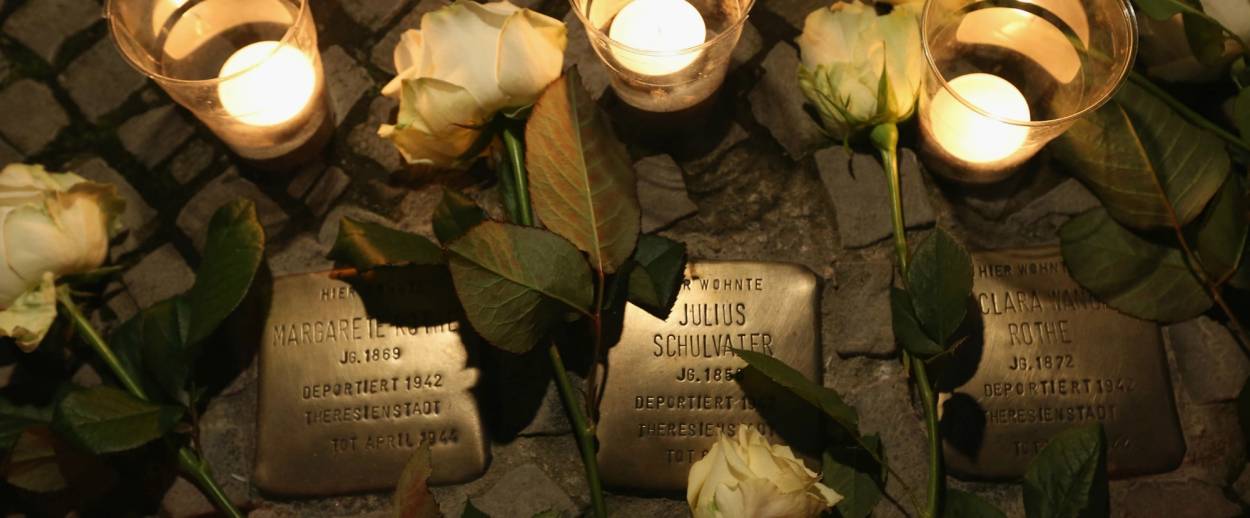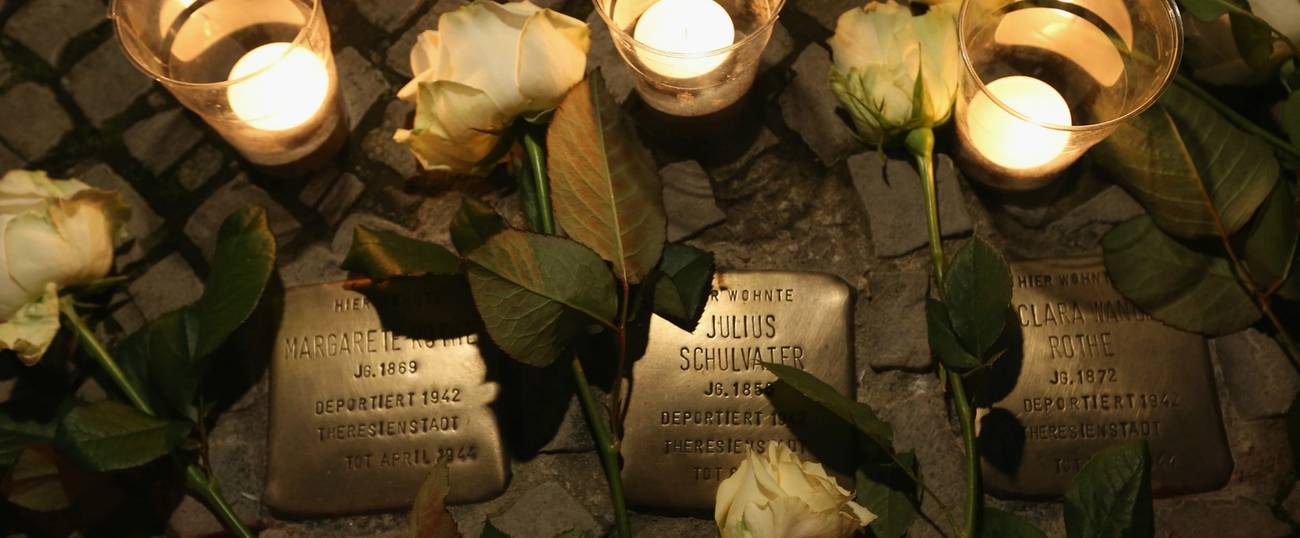Plan For Holocaust Memorial ‘Stumbling Stones’ Takes a Tumble
The Munich City Council continued its ban on Stolpersteine, a vote supported by a local Jewish leader. But plans are in the works for other commemorations.




The German city of Munich has decided to continue its ban on Stolpersteine, or the golden “stumbling stones” that memorialize victims of the Holocaust along cobblestone streets in 18 countries across Europe (as of August 2014). According to German publication The Local, a Munich city council once again rejected the proposal to install Stolpersteine: a series of small brass stones, emblazoned with the names and “last address of choice” of Holocaust victims.
The Stolpersteine project was started by German artist Gunter Demnig in 1996. His idea was that a cobblestone-like memorial would be placed outside a Holocaust victim’s last known place of residence. And Demnig’s memorials have caught on. According to the New York Observer, “there are close to 54,000 Stolpersteine in more than 1,200 cities and towns in Europe, including 500 other locations in Germany.”
But Munich, the historic home of the Nazi movement, has banned the implementation of Stolpersteine since 2004. Interestingly, the reason for Munich’s stubbornness actually stems from the city’s Jewish community.
Newsweek reported that in 2004, Charlotte Knobloch, “leader of the city’s Jewish community and former president of the Central Council of Jews in Germany,” according to Spiegel, argued that it would be disrespectful for people to walk over the names of Holocaust victims. Knobloch is herself a Holocaust survivor and announced in a statement released by the AFP in January that “people murdered in the Holocaust deserve better than a plaque in the dust, street dirt and even worse filth.”
The Munich City Council has thus far adhered to Knobloch’s stance. However, last week the city proposed a compromise: the “placement of plaques on the walls of the houses where Nazi victims lived.” It also announced plans to erect “a central memorial listing the city’s Holocaust victims.”
But the compromise is not sitting well with Terry Swartzberg, a Jewish-American man who has lived in Munich for over thirty years. In February, he launched a Change.org petition that called for the Stolpersteine. “Help us realize the heartfelt wish of the families of the victims of the Shoah: Stolpersteine for their murdered relatives in Munich,” the petition read. It has since received nearly 100,000 signatures, but it was not enough to change the city’s ruling.
“This fight isn’t going away,” Swartzberg told Israel’s i24 news in June. “We won’t give up, and if they won’t approve it this time, we will push for a referendum. Munich is going to see another ten years of controversy.”
Jas Chana is a former intern at Tablet.